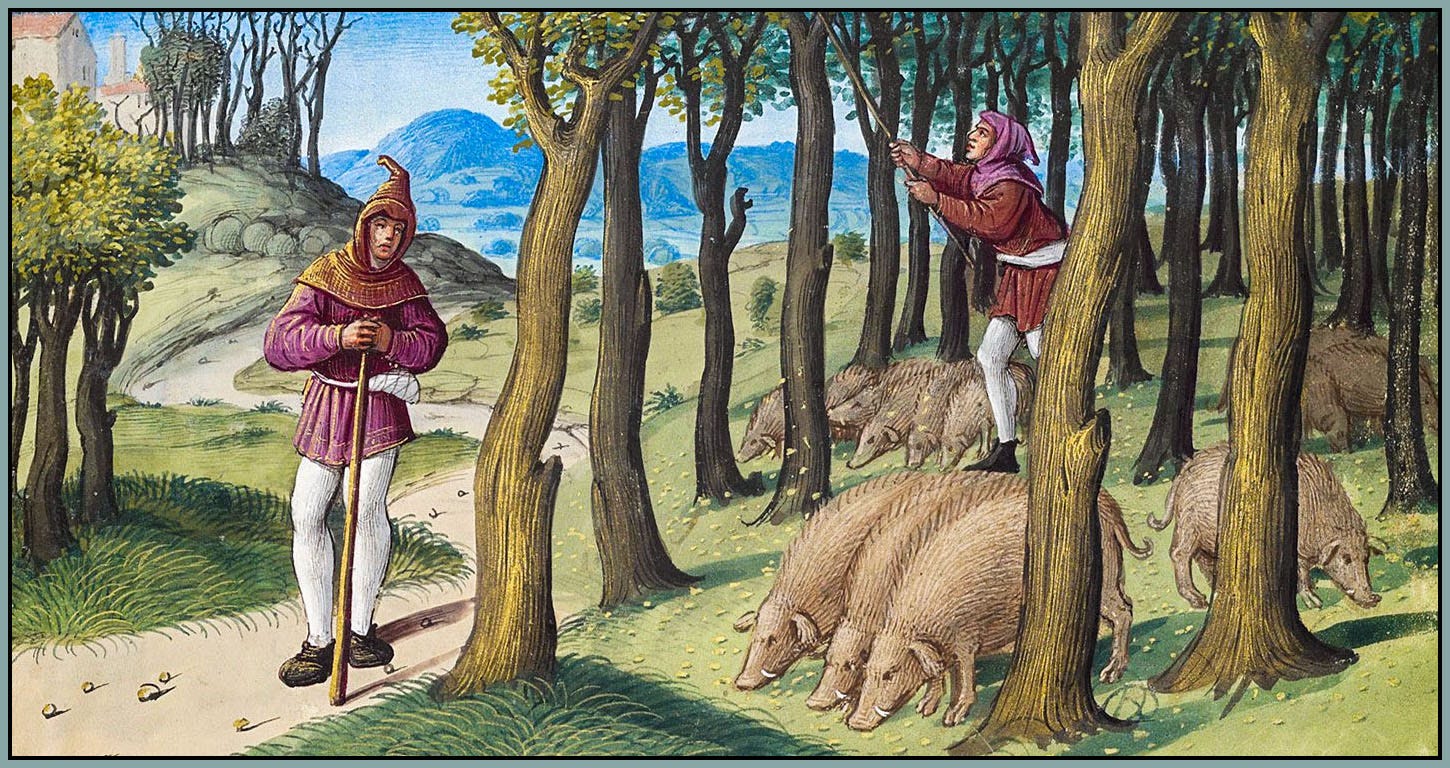Without True Leisure There Is No Culture
The Medieval Year: Ninth Day before the Kalends of February
The Medieval Year, a regular feature of the Via Mediaevalis newsletter, gives us an opportunity to appreciate calendrical artwork from the Middle Ages, reflect on the basic tasks and rhythms of medieval life, and follow the medieval year as we make our way through the modern year. You’ll find helpful background information in these posts:
Let’s briefly look back at some of the monthly medieval labors that we’ve had the opportunity to enjoy thus far.
October (Sowing Winter Grains):
November (Fattening the Hogs):
December (Converting the Hogs into Ham and Sausage):
What all these scenes suggest is that the labors of the month are truly laborious. Cutting wheat stalks with a sickle, beating the sheaves with a flail, stomping on grapes for hours and days on end, dragging heavy, bloody carcasses around—this is hard, even exhausting, work. When we get to January, however, the trend shifts, and what we find in the manuscripts is a rather different sort of “labor.”
Keep reading with a 7-day free trial
Subscribe to Via Mediaevalis to keep reading this post and get 7 days of free access to the full post archives.










